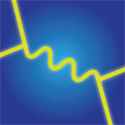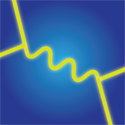A new partner for the top quark?
Supersymmetry is a proposed extension of the Standard Model of particle physics in which each elementary particle has a partner—called a superpartner—with the opposite spin statistics. The idea addresses some key theoretical concerns about the Standard Model and provides a compelling candidate particle for the dark matter. If they exist, the superpartners in most models with these properties should be detectable at the Large Hadron Collider (LHC).
In most of the supersymmetric models proposed so far, the spin-1/2 fermion particles that make up matter—the quarks and the leptons—have heavy spin-0 superpartners. The spin-1 particles of force, like the photon, have heavy spin-1/2 superpartners. Writing in Physical Review Letters, Haiying Cai, Hsin-Chia Cheng, and John Terning of The University of California, Davis, consider an alternative possibility in which the superpartners of the spin-1/2 top and bottom quarks are spin 1 instead of spin 0.
Aside from providing a possible explanation for why the top quark is so heavy, this model predicts experimental signatures that are different from other models and could be measured at the LHC (notably, an enhanced cross section for the top quark’s superpartner). It is important to have a panoply of possible signatures to compare to what is actually measured at the LHC. – Robert Garisto





